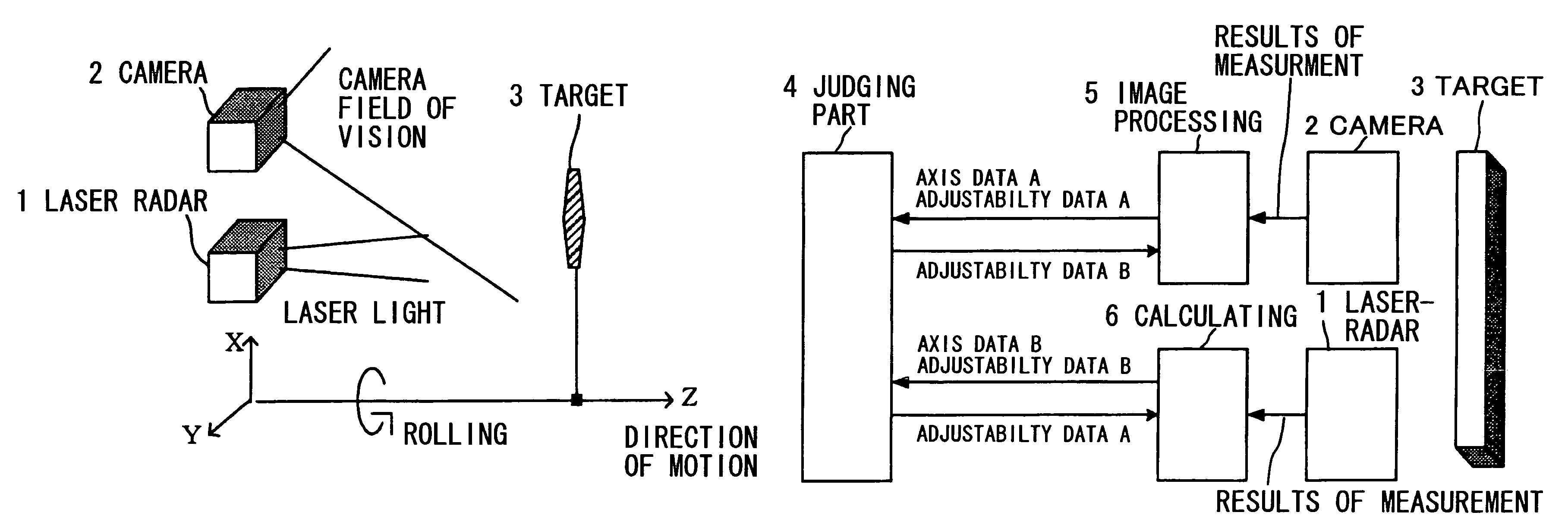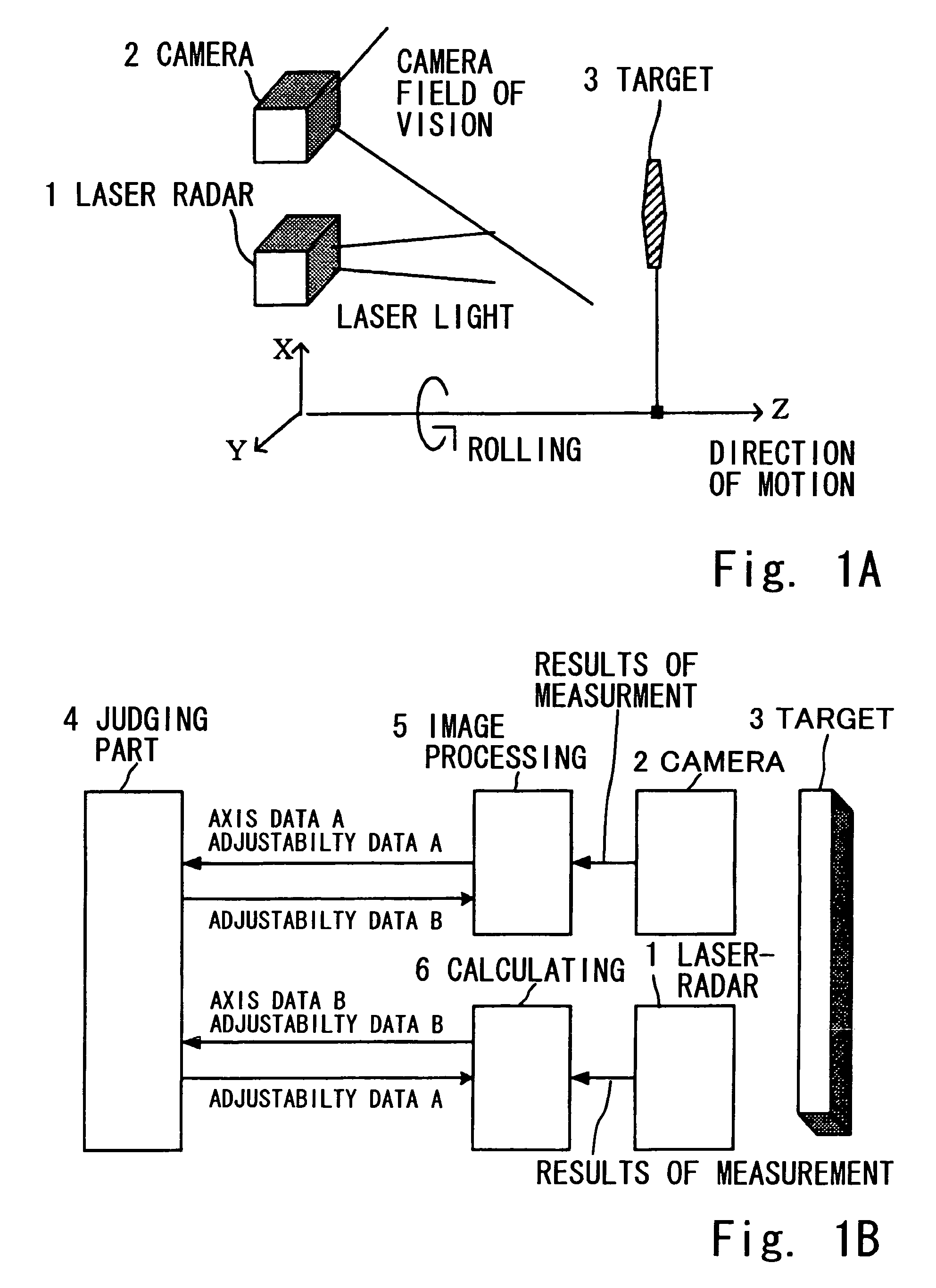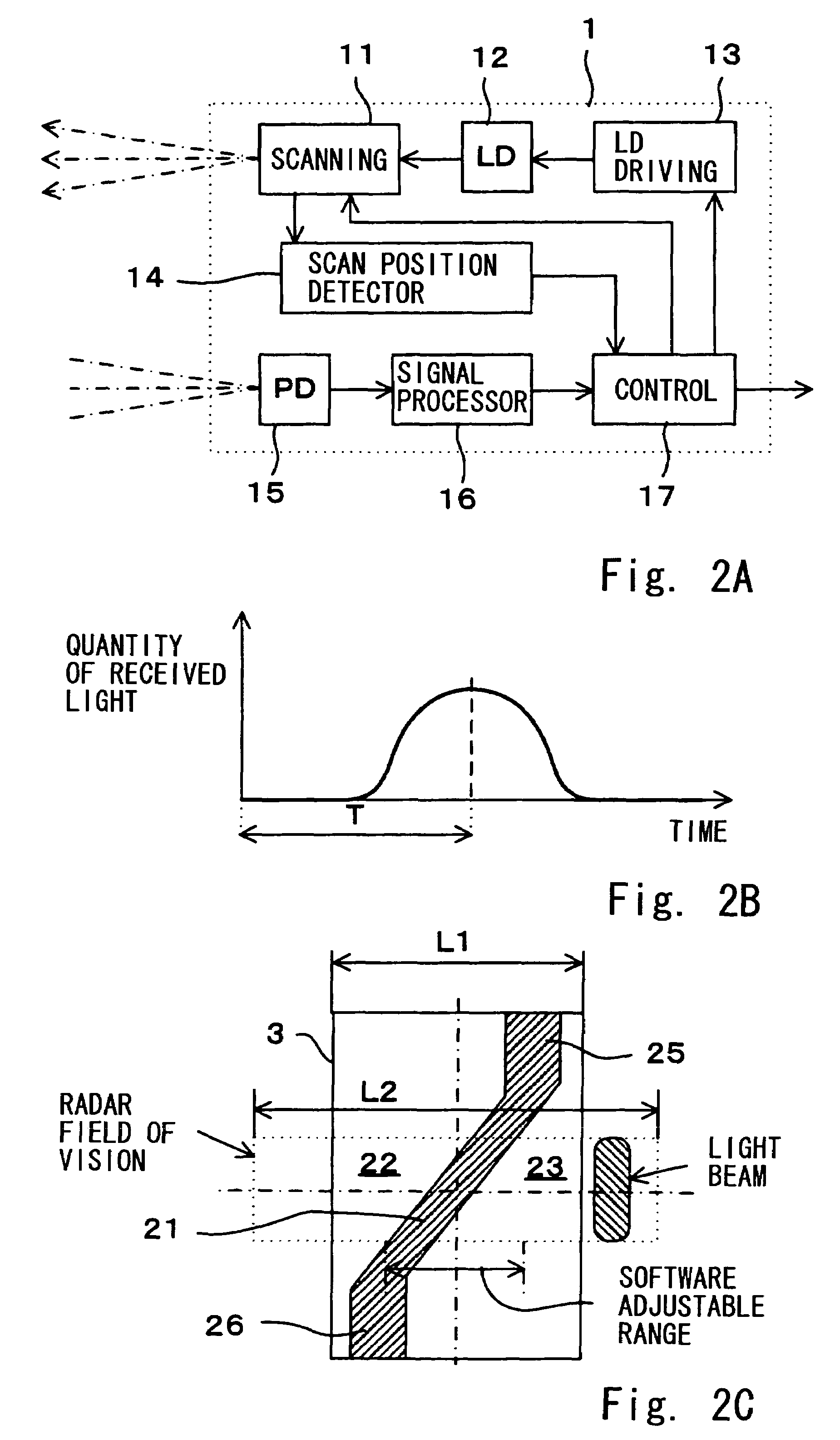Method of adjusting monitor axis
a monitor axis and axis technology, applied in the field of monitors, can solve the problems of insufficient measurement, inability to fully utilize the merits of fusion type, and significant distance between a monitored position
- Summary
- Abstract
- Description
- Claims
- Application Information
AI Technical Summary
Benefits of technology
Problems solved by technology
Method used
Image
Examples
Embodiment Construction
[0044]The invention is described next by way of an example with reference to FIGS. 1A, 1B, 2A, 2B and 2C. FIG. 1A shows the main structure of an equipment and FIG. 1B is a block diagram for explaining the control system of a monitor. FIG. 2A is a block diagram for showing the structure of a laser radar. FIG. 2B is a drawing for showing the principle of measurement by it, and FIG. 2C is a front view of a target used for adjustment.
[0045]In FIG. 1A, numeral 1 indicates a laser radar (hereinafter simply referred to as a radar) and numeral 2 indicates a camera set on the same vehicle as the radar 1. The radar 1 in this example is a two-dimensional scan laser radar capable of scanning in both the horizontal left-right direction and in the vertical up-down direction. Numeral 3 indicates a target used for adjustment. In this example, the left-right direction as seen from the radar 1 and the camera 2 is the standard direction of the scan and the vertical direction is sometimes referred to a...
PUM
 Login to View More
Login to View More Abstract
Description
Claims
Application Information
 Login to View More
Login to View More - R&D
- Intellectual Property
- Life Sciences
- Materials
- Tech Scout
- Unparalleled Data Quality
- Higher Quality Content
- 60% Fewer Hallucinations
Browse by: Latest US Patents, China's latest patents, Technical Efficacy Thesaurus, Application Domain, Technology Topic, Popular Technical Reports.
© 2025 PatSnap. All rights reserved.Legal|Privacy policy|Modern Slavery Act Transparency Statement|Sitemap|About US| Contact US: help@patsnap.com



